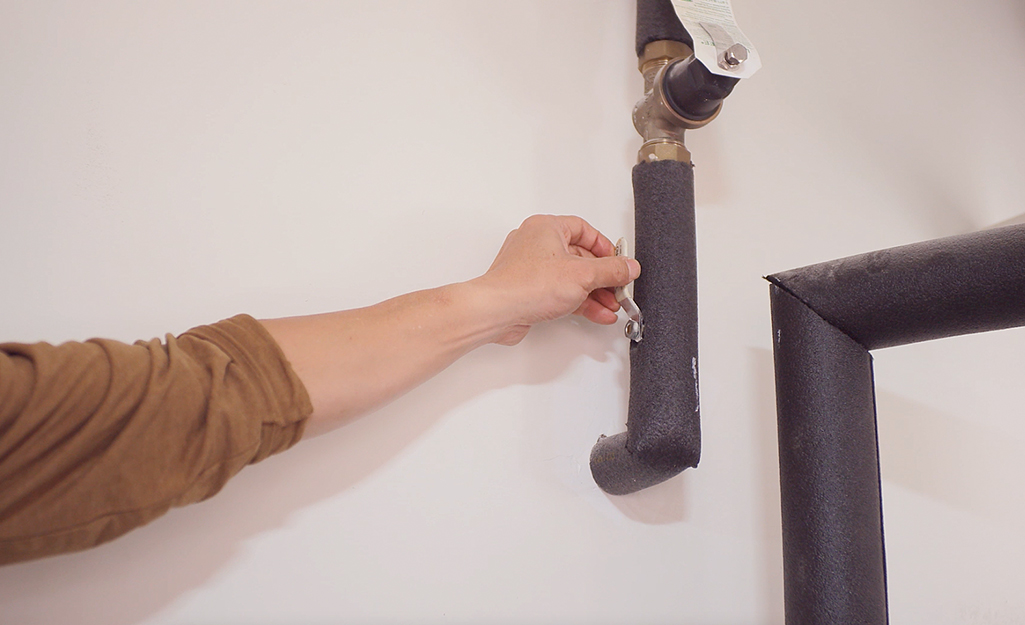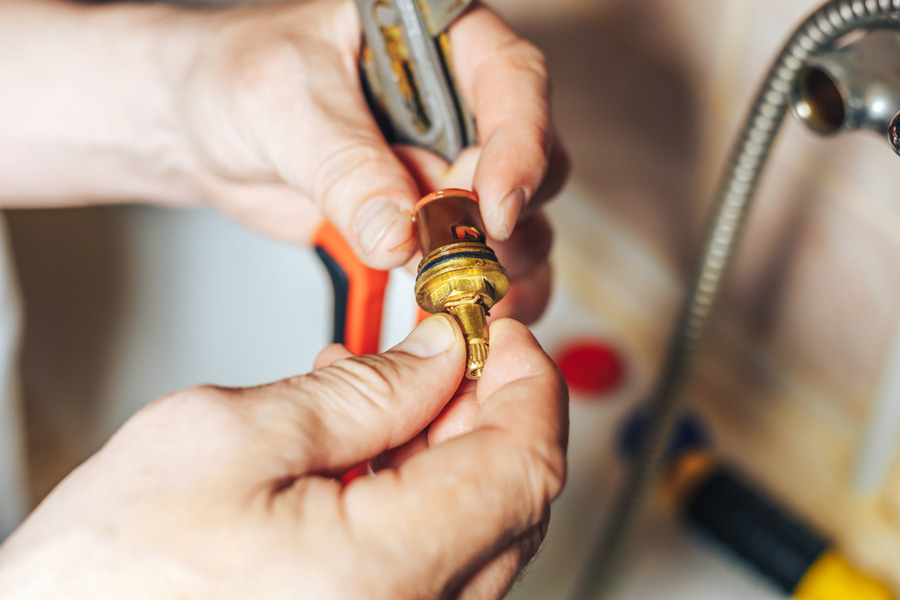Explanations Why It's Crucial to Mend a Malfunctioning Faucet
Explanations Why It's Crucial to Mend a Malfunctioning Faucet
Blog Article
Just how do you actually feel in relation to 4 Common Reasons for a Leaky Faucet?

Leaking taps might look like a small hassle, however their influence surpasses just the inconvenience of the noise. From drainage to sustaining unneeded financial costs and health risks, neglecting a trickling tap can lead to various consequences. In this short article, we'll explore why it's important to resolve this typical home concern without delay and properly.
Waste of Water
Environmental Impact
Dripping taps add considerably to water wastefulness. According to the Epa (EPA), a single faucet dripping at one drip per secondly can squander more than 3,000 gallons of water per year. This not only pressures water sources yet additionally impacts ecological communities and wild animals dependent on them.
Financial Prices
Raised Water Costs
Past the ecological effect, dripping taps can pump up water bills substantially. The built up waste in time translates into higher utility expenses, which can have been stayed clear of with timely repair work.
Potential Home Damages
In addition, long term trickling can cause damage to fixtures and surfaces surrounding the tap. Water buildup can trigger discoloration, deterioration, and even architectural concerns if left ignored, resulting in extra repair prices.
Health and wellness Concerns
Mold And Mildew and Mold Development
The constant visibility of moisture from a trickling faucet develops an excellent environment for mold and mildew and mildew development. These fungi not only jeopardize interior air high quality however likewise posture wellness risks, particularly for people with respiratory conditions or allergic reactions.
Waterborne Illness
Stagnant water in leaking taps can come to be a breeding place for bacteria and various other pathogens, raising the risk of waterborne illness. Contaminants such as Legionella microorganisms flourish in stationary water, potentially causing significant diseases when consumed or breathed in.
DIY vs. Specialist Repair service
Advantages and disadvantages of Do It Yourself Fixing
While some may attempt to repair a leaking tap themselves, DIY repair work include their very own set of difficulties. Without correct expertise and tools, DIY efforts can exacerbate the issue or cause insufficient fixings, prolonging the problem.
Advantages of Hiring an Expert Plumber
Working with a specialist plumber ensures that the underlying cause of the dripping faucet is addressed efficiently. Plumbing technicians have the know-how and equipment to identify and repair faucet problems effectively, saving time and reducing the danger of additional damage.
Step-by-Step Guide to Dealing With a Dripping Tap
Devices Called for
Before attempting to fix a dripping tap, collect the needed tools, including an adjustable wrench, screwdrivers, replacement components (such as washing machines or cartridges), and plumber's tape.
Usual Tap Issues and Their Solutions
Identify the kind of tap and the details problem creating the drip. Usual issues consist of worn-out washers, corroded shutoff seats, or damaged O-rings. Describe producer instructions or on-line tutorials for detailed assistance on repair work.
Preventive Measures
Normal Maintenance Tips
To stop leaking faucets, execute regular maintenance such as cleansing aerators, checking for leaks, and changing worn-out components immediately. Additionally, take into consideration setting up water-saving devices or updating to much more reliable components.
Value of Prompt Repairs
Addressing dripping taps as soon as they're seen avoids more water waste and potential damage, inevitably saving both water and cash in the long run.
Effect On Residential Or Commercial Property Worth
Perception of Well-Maintained Building
Maintaining a property in good condition, including resolving maintenance problems like trickling taps, improves its viewed worth and desirability amongst prospective buyers or tenants.
Impact on Resale Value
Qualities with well-kept plumbing components, consisting of faucets, command higher resale values in the property market. Addressing leaking taps can add to a favorable impact during home examinations and negotiations.
Environmental Responsibility
Specific Payment to Conservation
Taking responsibility for repairing dripping faucets lines up with wider efforts toward water preservation and environmental sustainability. Every individual's actions jointly make a substantial influence on preserving priceless sources.
Lasting Living Practices
By focusing on punctual repair services and taking on water-saving routines, people contribute to sustainable living techniques that profit both existing and future generations.
Final thought
Attending to a leaking faucet goes beyond plain ease; it's a crucial action toward conserving water, reducing economic prices, and securing health and wellness and home. Whether through do it yourself fixings or expert support, taking action to take care of leaking faucets is a tiny yet impactful method to promote liable stewardship of resources and contribute to a much healthier, a lot more sustainable future.
How to Fix a Dripping or Leaky Faucet
A leaking faucet is one of the most common problems that homeowners encounter, but it being commonplace doesn’t make it any less annoying. The constant drip drip drip of a leaking bathtub faucet, showerhead, or sink tap can disturb your home’s serenity. Left neglected, a dripping faucet can also result in higher water bills and discoloration or mold growth in your sink or plumbing fixtures.
Fortunately, you don’t have to be a trained plumber to know how to stop a dripping faucet. With some basic tools, replacement parts, and a little patience, leaky faucet repair is a breeze. In this article, we’ll explain what causes dripping faucets and how you can fix them.
What Causes a Leaking Faucet?
Kitchen and bathroom faucets come in all manner of designs, but most involve some combination of valves, O-rings, seals, and washers. The O-ring is usually the weakest link, but any one of these pieces can wear down over time. Heat, moisture, temperature fluctuations, minerals, mold, and movement can contribute to warping and corrosion, breaking the watertight seal. This just comes with the territory of being a homeowner. Everything is always subject to wear and tear, and some component parts of your appliances and fixtures need to be replaced on occasion. At least replacement O-rings are cheap!
More rarely, dripping faucets can be a symptom of excessively high water pressure. Were this the case in your home, you would probably notice that the leak is not isolated to one faucet. Water pressure issues are harder to resolve on your own. We recommend contacting a professional plumber if you suspect your water pressure is too high.
How to Fix a Dripping Faucet
Pipe wrench or monkey wrench Allen wrench set Screwdrivers Old towel or rag Shut off the water.
Before you do anything, you need to turn off the water to keep from drenching your kitchen or bathroom. You should find a valve under the sink and against the wall. Once you’ve turned this valve, try turning the faucet on to confirm that the water source has been cut off.
If you can’t locate your local valve for the faucet you’re working on, you can always shut off the water to the house at the main valve. Of course, this will prohibit anyone from using the sinks, showers, or toilets while you’re working on the faucet that’s giving you trouble.
Plug or block the drain.
You’ll be disassembling the faucet and removing some small bits of hardware. Plug the drain with a stopper or rag to avoid the possibility of a small screw falling into your P-trap.
Take apart the faucet assembly.
There are several varieties of kitchen and bathroom faucets, each with its own manner of assembly. For detailed instructions on how to disassemble your faucet, you can refer to the fixture’s manual or contact the manufacturer. If you know whether you have a ball, disc, cartridge, or compression faucet, you can find detailed schematics online.
In general, you need to begin by removing the faucet handles. You might notice a small screw that you’ll need to remove with a screwdriver or Allen wrench. If you don’t see any visible securing hardware, it’s likely hidden under a decorative cap that can be unscrewed or popped off with flathead screwdriver.
Remove each piece methodically, consulting a schematic when necessary. Take notes or arrange the pieces in such a way to make it easier to correctly reassemble the faucet later.
Remove the cartridge.
Once you’ve removed the handles and securing hardware, you should be able to remove the valve cartridge or stem. Some cartridges will slide right out. Other faucet models will require you to loosen a nut with a pipe wrench before you can remove the valve stem.
Examine the exposed hardware.
With the cartridge or stem removed, inspect the component parts. Check the rubber O-rings for wear and tear. Also examine the seat washer for corrosion or other damage. These pieces are usually the responsible parties for a dripping faucet, but it’s worth inspecting the other component parts while you have the faucet disassembled.
Find replacement parts.
Once you’ve identified which faucet component has failed, find an identical replacement. Your local hardware store should have O-rings, seat washers, and other standard components in stock. If you have a luxury or uncommon faucet, you may have to contact the manufacturer for a replacement part.
It’s a good idea to take your old parts with you to the hardware store so you can compare them with the store’s inventory and be sure you’re purchasing the correct replacement.
Reassemble the faucet.
With your new parts in hand, reconstruct the faucet and handles. Don’t be tempted to overtighten screws or nuts. You might think this could create a better seal, but it can instead damage or bend a delicate part of the assembly and create a new problem for you.
Turn on the water and test the faucet.
The only thing left to do is test your work. Unplug the sink, turn the water back on, and try the faucet. Congratulate yourself on a job well done!
https://www.libertyhomeguard.com/how-to-fix-a-dripping-or-leaky-faucet/

Do you enjoy more info about Water Dripping from Faucet: Why and How to Fix? Put a remark below. We would be delighted to hear your thinking about this blog posting. We hope that you visit us again before long. Liked our blog? Please share it. Let someone else check it out. Thank-you for your time invested reading it.
Report this page